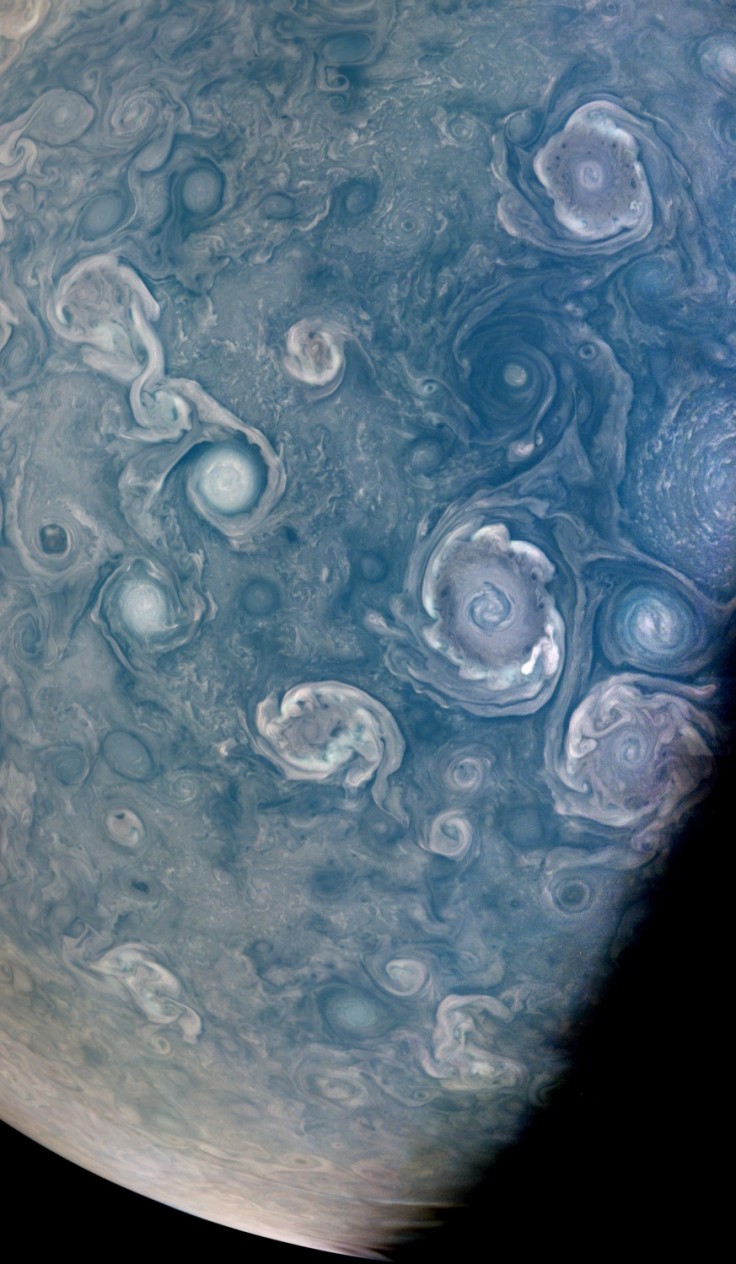NASA's Juno spacecraft has discovered something new about Jupiter's numerous polar storms.
The space agency recently published photos from Juno's 43rd close flyby of the Gas Giant, revealing a variety of polar storms that look and behave differently.
The Juno spacecraft was previously launched on Aug. 5, 2011, to understand the planet's origin and evolution, search for its solid planetary core, map its magnetic field, and other scientific tests, per NASA's Juno space probe page. It arrived at Jupiter on July 4, 2016.

Discoveries Made On Juno's Pictures Of Jupiter's Poles
NASA recently wrote in a blog post that its Juno spacecraft was able to use its JunoCam to take pictures of Jupiter's north pole, which revealed numerous powerful storms that have created hurricane-like spiral wind patterns.
These storms are of particular interest to NASA's experts as these storms vary in size, shape, and color. The space agency reports that the storms that created these wind patterns can be over 30 miles in height and hundreds of miles across.
The pictures also revealed that Jupiter has cyclones and anti-cyclones, which vary in color and the way they rotate.
For instance, cyclones were noted to spin counter-clockwise in the northern hemisphere and clockwise in the southern hemisphere. Meanwhile, anti-cyclones were found to spin the other way around - clockwise in the north and counter-clockwise in the south.
Interestingly, these storms show very different colors and shapes, which could be based on their location and the direction in which they rotate, per Space.com.
Significance of Jupiter's Polar Storms
Figuring out how the polar storms are formed is the key to figuring out Jupiter's atmosphere and figuring out the Gas Giant's fluid dynamics and cloud chemistry that create its other atmospheric features.
Read More : #EntertainmentTech Bugs Bunny as We Know Him Made His Debut in 'A Wild Hare' on This Day in 1940
As such, NASA organized the Jovian Vortex Hunter which allows the public to spot and help categorize vortices and other atmospheric phenomena visible in JunoCam photos of Jupiter.
As of July 2022, 2,404 volunteers have classified 376,725 storms using the Jovian Vortex Hunter project website, which can be accessed anywhere with any device.
Juno Space Probe Details
NASA's Juno space probe, which was named after the wife of the Roman God Jupiter, was launched by an Atlas V rocket from Cape Canaveral, Florida on August 5, 2011, per Britannica. It previously flew by Earth for a gravity boost for its journey to Jupiter, which ended on July 4, 2016, due to its safe arrival.
The space probe has already 35 revolutions around the Gas Giant, per NASA. During that time, it was able to gather three terabits of science data and provided pictures of the planet and its many moons.
Thanks to NASA extending its mission, it is now able to continue its study of Jupiter, its rings, and its moons until September 2025 or until its end of life.
Juno's mission was supposed to end in July 2021, per The Planetary Society.
During its time in Jupiter's orbit, it has discovered not just the polar storms but also detected multiple kinds of lightning on the Gas Giant, and information about the planet's core.
Related Article : NASA Releases New James Webb Space Telescope Images of Jupiter









